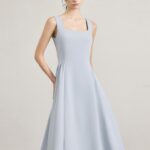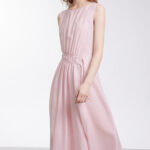A Guide to Styling and Wearing Traditional Hanfu
The Hanfu, a traditional Chinese garment with a history spanning over three thousand years, is more than just a piece of clothing—it’s a symbol of Chinese culture and heritage. This guide will take you through the rich history of Hanfu, the various styles available, and provide practical tips on how to style and wear this elegant attire.
History of Hanfu
Hanfu’s origins can be traced back to the Yellow Emperor, a legendary figure in ancient Chinese mythology. Over the dynasties, the design and style of Hanfu evolved, reflecting the social, political, and cultural shifts of the time. From the flowing robes of the Tang Dynasty to the more structured garments of the Ming Dynasty, each era left its mark on Hanfu’s design.
Different Styles of Hanfu
Hanfu comes in various styles, each with its unique characteristics. Some of the most popular styles include:
- Ziju – A simple, straight-cut robe often worn by scholars and officials.
- Shuài – A long, flowing robe with wide sleeves, favored by royalty and nobility.
- Qún – A skirt and blouse combination, popular among women for its elegance and versatility.
- Duān Shū – A short, jacket-like garment worn over a robe, often seen in colder seasons.
How to Style Hanfu
Styling Hanfu is an art form that combines traditional aesthetics with modern sensibilities. Here are some tips to help you create a stunning Hanfu look:
- Choose the right fú (traditional Chinese clothing) for the occasion. For formal events, opt for more elaborate designs, while casual gatherings may call for simpler attire.
- Accessorize with traditional Chinese jewelry, such as jade pendants, silk sashes, and embroidered slippers.
- Consider the season and climate when selecting your Hanfu. Lighter fabrics like silk and cotton are ideal for warmer months, while heavier materials like brocade are perfect for colder weather.
- Pay attention to the color palette. Traditional Chinese colors like red, black, and gold are auspicious and elegant.
How to Wear Hanfu
Wearing Hanfu is a graceful affair. Follow these steps to ensure you’re dressed correctly:
- Start with the undergarments, such as the neiyi (underwear) and neiku (underpants).
- Put on the shenti (inner robe), which is a simple, unadorned garment that serves as the base layer.
- Next, wear the main Hanfu garment, ensuring that it is properly aligned and fits comfortably.
- Add any additional layers, such as the duan shu or shuai, depending on the style and weather.
- Finish off with accessories that complement your outfit and enhance the overall look.
Conclusion
Embracing the beauty of Hanfu is a celebration of Chinese culture and tradition. Whether you’re dressing up for a special occasion or simply want to explore your heritage, this guide will help you feel confident and stylish in your Hanfu attire. Remember, the key to a successful Hanfu experience lies in understanding its history, knowing the different styles, and mastering the art of styling and wearing it with grace.






